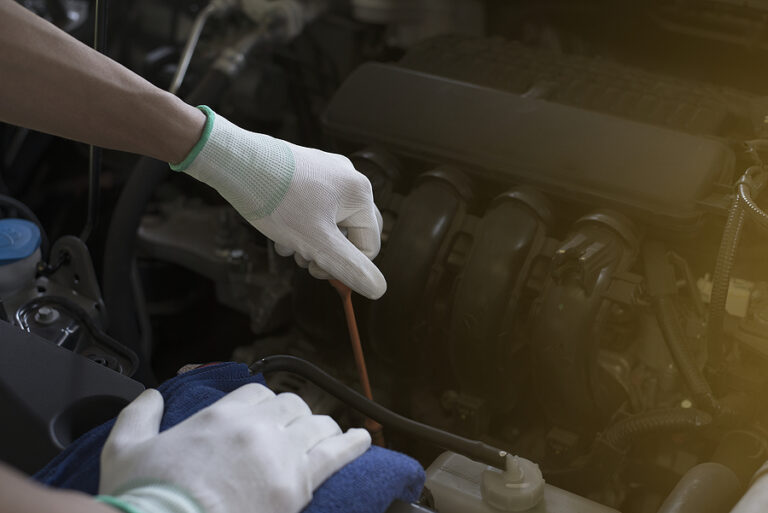

While the life of these solutions will vary according to the severity of the leak, the key is repairing it as soon as possible. You may also benefit from our Hy-per Cool Super Coolant, which is compatible with virtually every type of antifreeze and proven by independent Dyno-testing to lower engine temperatures up to 25 degrees Fahrenheit. It can also give your oil greater protection, restore fuel economy and performance and extend the service life of your oil by as much as 50 percent. Hy-per Lube Oil Supplement seals piston rings and valve guides, which can prevent or reduce leaking issues. When changing the oil and coolant, we recommend adding quality products like our Hy-per Lube Oil Supplement. If so, you will want to change out your oil as well. Similarly, you will want to check your oil dipstick and see if it shows an oil-coolant mixture in your oil tank. You will want to clean the reservoir thoroughly and flush the radiator with water. If you have oil mixed with coolant in the reservoir, you will notice a thick, milky or gravy-like substance that is a tell-tale sign that you have this issue.
Coolant in oil symptoms how to#
How to Fix Oil in the Coolant Reservoir or Coolant in Your Oil The consequences of diluting either substance should be clear - but in case it’s not, the answer is that you can expect overheating and/or severe damage to your engine if you try to drive around with coolant leaking into oil or oil in the coolant reservoir. You coolant has another purpose: it is designed to keep your car from overheating. In basic terms, your car’s engine oil is designed to lubricate the internal components of your car so that they operate smoothly rather than grinding each other up via heat and friction. Is Coolant in Engine Oil Dangerous?Īs we pointed out and as you could probably guess, having your coolant and oil mixed is terrible for the health of your car. We talk to customers all the time that have this problem. An accident that cracks the cylinder head or damages the engine block can result in oil and coolant mixing as well. Oil and coolant can also end up mixing if your engine overheats and either destroys the gasket or cracks the cylinder head. If you have a broken or damaged head gasket, you can expect your oil and coolant to start mixing. Your cylinder head gasket (aka “head gasket”) is the part of your engine that prevents coolant or oil from leaking into one another. Your engine is designed so that there is one system that controls engine oil to lubricate your vehicle and another that manages coolant to keep your car from overheating.

If there is oil in your coolant or vice versa, it generally means there is a failure in one or more of your engine’s gaskets or seals. This can cause serious damage to your car, and if you discover it happening, you need to address it immediately.īut first off: how do oil and coolant get mixed together and what exactly can you do about it? Why Is There Oil in My Coolant? One of the problems you want to avoid when it comes to your car is having your engine coolant mixing with your oil.


 0 kommentar(er)
0 kommentar(er)
